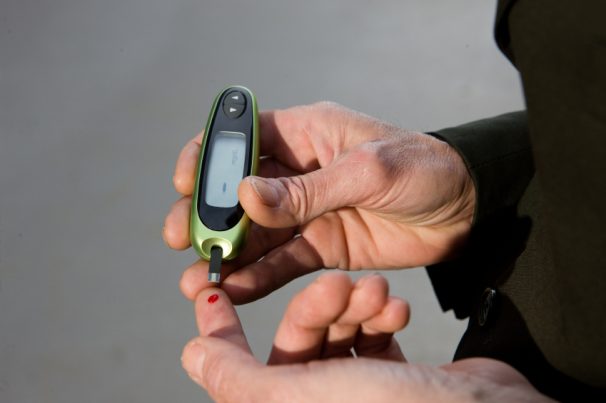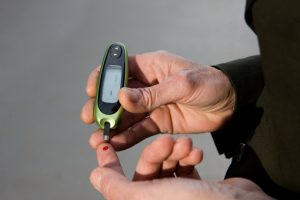
Type 2 diabetes – causes, side effects and treatments at NaturalPedia.com
Friday, July 20, 2018 by Ralph Flores
http://www.naturalpedia.com/type-2-diabetes-causes-side-effects-and-treatments-at-naturalpedia-com.html

Type 2 diabetes is the most common form of diabetes mellitus, a disease marked by abnormally high blood glucose levels. In particular, people with Type 2 diabetes have a condition called insulin resistance, where the body does not use insulin properly to transport glucose into cells for energy. The body, at first, will produce more insulin to compensate, but over time, it will not be enough to stay blood glucose at normal levels.
In the U.S., at least one in ten people are diagnosed with diabetes – with 95 percent of all cases being Type 2 diabetes. The condition is often seen in people over 45 years, but the latest trends have seen development as early as children, teens, and young adults.

Known risk factors and symptoms of Type 2 diabetes
For the most part, Type 2 diabetes can happen at any age; although, this is often diagnosed in middle-aged and older adults. Aside from age, people with a family history of diabetes, as well as those who are overweight and obese, are also more likely to develop the condition. In terms of ethnicity, the disease is common in African Americans, Hispanics, American Indians, Asian Americans, and Pacific Islanders.
Those with a sedentary lifestyle and those with existing health problems like hypertension are also at risk of having Type 2 diabetes. If a person has been diagnosed with prediabetes, where his blood sugar is high but not enough to be classified as diabetes, his chances of it developing into Type 2 diabetes are also increased. The same goes for women who had gestational diabetes during her pregnancy.
Symptoms of Type 2 diabetes include:
- Increased thirst
- Frequent urination
- Fatigue
- Blurry vision
- A tingling feeling or numbness in the extremities
- Skin ulcers that do not heal
- Unexplained weight loss
Type 2 diabetes can develop slowly, and some people may not even display symptoms until complications occur.
In particular, the causes of Type 2 diabetes include:
- Overweight and obesity
- Physical inactivity
- Insulin resistance
- Genetics
Body systems affected by Type 2 diabetes
Type 2 diabetes may seem asymptomatic at first, but it can lead to multiple organ damage (e.g. heart, blood vessels, nerves, eyes, and kidneys) over time. In some cases, complications from the disease result in disability and even death. Some complications include:
- Cardiovascular disease. This includes coronary heart disease, heart attacks, stroke, atherosclerosis, and hypertension.
- Neuropathy. This occurs when the capillaries that provide oxygen-rich blood to the nerves, especially the legs, are damaged. If it affects the digestive tract, it can result in nausea, vomiting, diarrhea or constipation. In men, Type 2 diabetes can cause erectile dysfunction.
- Nephropathy. Severe damage from diabetes can lead to end-stage kidney disease and kidney failure.
- Eye damage. If the blood vessels of the eye are damaged, this can possibly lead to blindness or other severe conditions like glaucoma.
- Foot damage. Once diabetes damages the nerves or the blood vessels in the foot, this can lead to serious infections which heal poorly.
- Alzheimer’s disease. The exact connection is unclear, but experts have suggested that poor sugar control increases the risk of Alzheimer’s disease.
Food items or nutrients that may prevent Type 2 diabetes
A person’s diet can greatly impact his likelihood of getting Type 2 diabetes – if he eats unhealthy food items, he increases his risk; if he maintains a healthy diet, then his risk is greatly decreased. However, this does not mean that a person gives up sweets entirely or eats flavorless food for the rest of his life: An important aspect of diet is paying attention to certain food choices, especially carbohydrates. Following some diets, such as the Mediterranean diet, can help manage this.
Losing weight, together with healthy food choices, can significantly reduce the risk of diabetes.
Some food items that a person should eat more include:
- Healthy fats – found in nuts, olive oil, fish, flaxseed, and avocados
- Fruits and vegetable – go for fresh, the more colorful the better
- High fiber cereals and whole grains
- Fish and shellfish
- High-quality protein – includes eggs, beans, and unsweetened yogurt
Conversely, he/she should eat less:
- Trans fats – found in partially hydrogenated or deep-fried foods
- Packaged and fast foods – especially those high in added sugars
- White bread and refined cereals, pasta, and rice
- Processed meat and red meat
- “Low-fat” products that use added sugar as an additive
Of the macronutrients, carbohydrates have the greatest impact on blood sugar levels. A good rule of thumb is to focus on high-fiber complex carbohydrates, which are digested more slowly. This prevents the body from making too much insulin. Some high-fiber alternatives include:
- Brown or wild rice, riced cauliflower
- Sweet potatoes, yams, cauliflower mash
- Whole-wheat pasta, spaghetti squash
- Whole-wheat and whole-grain bread
- High-fiber cereals
- Steel-cut or rolled oatmeals
- Leafy green vegetables
Treatments, management options for Type 2 diabetes
In addition to a healthy diet, an increased physical activity also reduces the likelihood of getting the disease, even if you already have prediabetes or have a family history of diabetes. To note, a person should aim for 30 minutes of moderate physical activity in a day. Some examples include brisk walking, bike riding, and swimming.
Overweight people who lose at least seven percent of their body weight can greatly reduce their risk of diabetes. It also develops a healthier heart, more energy, and improved self-esteem.
Where to learn more
- Type 2 diabetes is best left untreated in many cases, researchers say
- Type 2 diabetes breakthrough: Imbalance in gut bacteria likely cause
- Turmeric is an ideal drug alternative for treating Type 2 diabetes – research journal
- Vitamin D reduces inflammation caused by Type 2 diabetes
- Type 2 diabetes can be avoided with the right kind of diet – do you know which one?
Summary
Type 2 diabetes is the most common form of diabetes mellitus.
People with Type 2 diabetes have a condition called insulin resistance, where the body does not use insulin properly to transport glucose into cells for energy.
In the U.S., 95 percent of all diabetes cases are Type 2 diabetes.
Type 2 diabetes is often seen in people over 45 years, but the latest trends have seen development as early as children, teens, and young adults.
Type 2 diabetes may seem asymptomatic at first, but it can lead to multiple organ damage, as well as disability and even death.
Losing weight, together with healthy food choices, can significantly reduce the risk of Type 2 diabetes.
Sources include:
Tagged Under: Tags: Type 2 Diabetes





